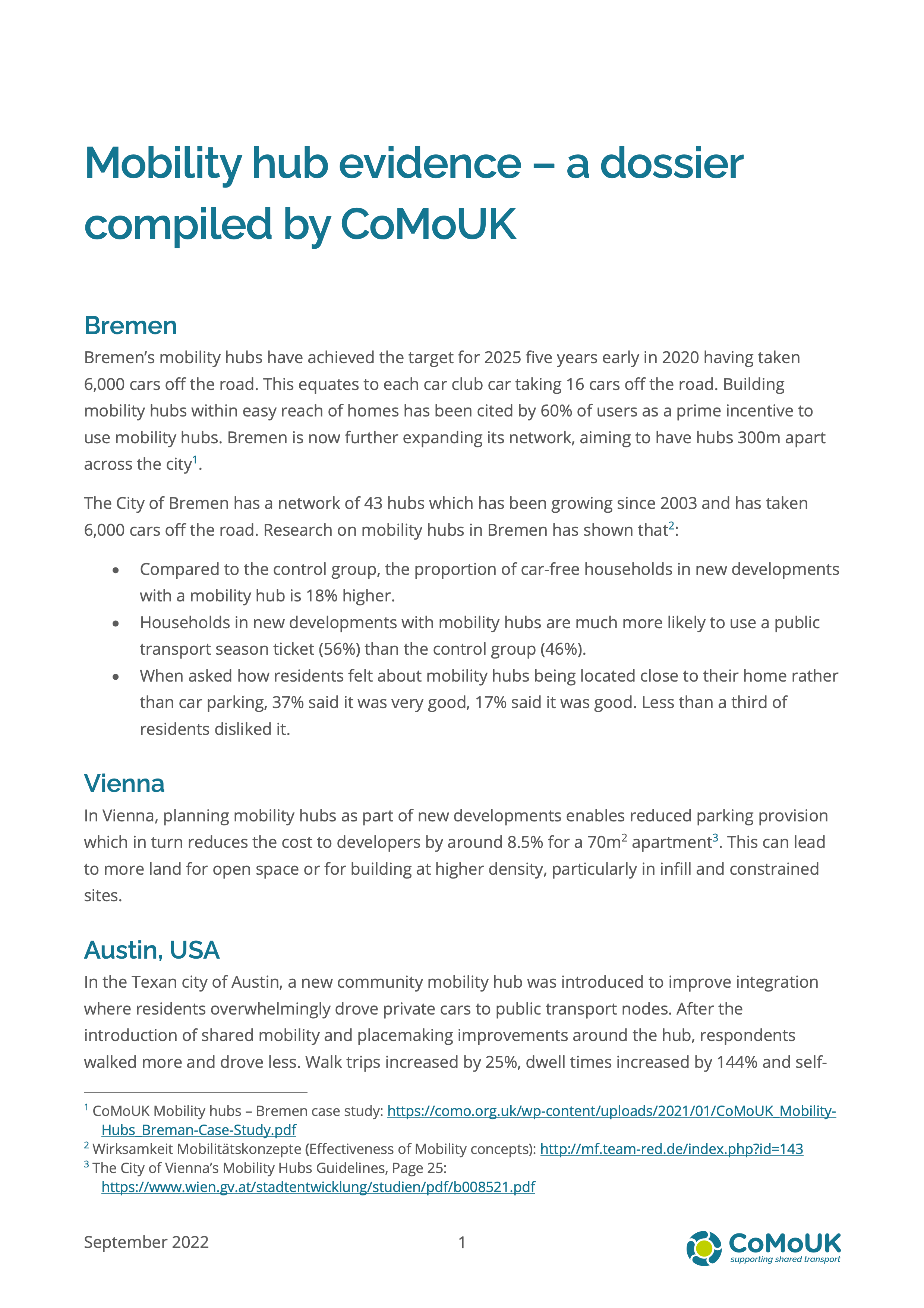Mobility hubs bring together shared transport with public transport and active travel in spaces designed to improve the public realm for all.
The concept is widely applied in many European and North American cities and increasingly spreading in the UK.
We have been working on hubs in depth since 2019. This spans publications including guidance and accreditation as well as supporting stakeholders interested in hubs and providing consultancy services to public authorities about hubs.


Mobility hubs reclaim space for sustainable and equitable modes, thereby reducing the dominance of the private car and its associated problems of congestion, carbon emissions, air quality and social exclusion.

They boost convenience for multi-modal trips, with the possibility of seamless switches and improved links between different layers of transport such as the core public transport network and shared services.

They can perform a sustainable ‘first or last mile’ connection to the nearest bus or railway services, in a cost effective way. They can provide flexible 24 hour services as a sustainable, accessible, alternative to private car ownership.

They can offer a safer and more comfortable dwell time which will lead to improved access for more vulnerable users.

They raise the profile and visibility of the range of shared and other sustainable travel modes, which provides a new status and appeal, with the associated benefits of reduction in car use.

They should provide space for adapted and inclusive modes and be accessible themselves.

They provide an impetus for change in reducing parking provision, creating high density development and changing driving habits. In some cases developer contributions can be used to fund mobility hubs

They allow space to be reorganised for the benefit of pedestrians, cyclists and business owners addressing parking problems and creating more pleasant urban realm. Converting space previously used only for private parking to green space, waiting areas and additional facilities makes for a better experience for the traveller, increasing patronage.

They help solve issues of “street clutter” from dockless/free floating micromobility services and provide a natural home for EV charging infrastructure.
We are often asked about the international evidence base on mobility hubs. We have gathered the most insightful evidence we are aware of into this document. It covers five locations: Amsterdam; Bergen; Bremen; Vienna in Europe and Austin in the US. We will add to this document as more evidence comes forward. We are actively working on how the UK can best understand the performance of the mobility hubs being built here.

This is a selected range of external reports that we have found useful and interesting.
Links open in a new tab.